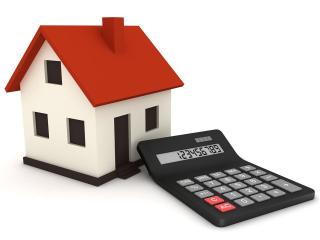Tax Relief Applications/FAQ

Homestead Exemption
This program provides a measure of property tax relief for certain individuals that have owned homestead property in Maine for at least 12 months and make the property they occupy on April 1 their permanent residence. The application deadline is April 1st. If you submit your application after April 1, it will not be considered until the following fiscal year.
Homestead Exemption Form
Homestead Exemption FAQ
Veteran Exemption
This program provides tax relief to veterans and, widows/widowers of veterans, who served during a recognized war period and are 62 years or older, or, are receiving 100% disability as a Veteran; or, became 100% disabled while serving. The following documents are needed, by April 1 along with the application: Form DD 214, a copy of driver’s license, and a copy of birth certificate. Other documents may be needed based on your application.
Veteran Exemption Application
Veteran Widow/Widower Exemption Application
Flowchart of Veteran’s Exemption Qualifications
Blind Persons Exemption
An individual who is determined by a medical professional may receive a partial exemption on their property. A letter from a medical professional must accompany your application and be submitted by April 1st.
Blind Persons Exemption Application
Solar/Wind Exemption
This program exempts renewable energy equipment, such as solar panels, from property tax beginning April 1, 2020. Taxpayers must apply for the credit by April 1 of the first year the exemption is requested.
Solar/Wind Exemption Application
Current Use Programs
The State of Maine has four current use programs which offer the property owner a reduction in their assessed value: Farmland, Open Space, Tree Growth, and working waterfront. All four programs are administered by the municipal tax assessor. Applications must be filed on or before April 1st to be considered for that fiscal year. Certain criteria must be met to be eligible for each program and any future change in the use of the land will cause disqualification resulting in a penalty. Please see below for more information on each program.
Farmland
In the Farmland Use program, the property owner is required to have at least five contiguous acres in their tract of land. The land must be used for farming, agriculture or horticulture and can include woodland and wasteland. Additionally, the tract must contribute at least $2,000 gross income from farming activities each year.
The Department of Agriculture prepares a valuation guideline for the municipality, which results from studies based on suggested values using a correlation from income stream and market data attributable to agricultural enterprise.
If the property no longer qualifies as a farmland tract, then a penalty will be assessed. The penalty is equal to the taxes that would have been paid in the last five years if the property had not been in farmland, less the taxes that were originally assessed, plus any interest on that balance.
Please see Bulletin 20 for more information concerning the Farmland Use program.
Farmland Use Program Application
Open Space
There is no minimum acreage requirement with this program. However, minimum areas and setbacks must be excluded from classification.
The tract must be preserved or restricted in use to provide a public benefit. Benefits recognized include public recreation, scenic resources, game management, and wildlife habitat. The assessor is responsible for determining the value placed on open space land. In the determination of that value, the assessor must consider the sale price that a particular open space parcel would command in the open market if it were to remain in the particular category or categories of open space land for which it qualifies.
If the assessor is unable to determine the value of a parcel of open space land based on the valuation method above, the assessor may use the alternative valuation method. Using this method, the assessor reduced the fair market value of an open space land parcel by the cumulative percentage reduction for which the land is eligible according to certain categories. Those categories are as follows:
- Ordinary Open Space- 20% reduction
- Permanently Protected- 30% reduction
- Forever Wild- 20% reduction
- Public Access- 25% reduction
In other words, if the property met all of the above requirements, the owner would see a cumulative reduction of up to 95% on the classified land. If property no longer qualifies as open space, a penalty will be assessed using the same methodology as is used for removal from the Tree Growth program. Please see Bulletin 21 for more information concerning the Open Space program.
Open Space Program Application
Tree Growth
This program provides a benefit for owners of at least 10 acres of forested land used for commercial harvesting. A forest management and harvest plan must be prepared a sworn statement to that effect submitted with the application. Applications include a map of the parcel indicating the forest type breakdowns as well as all other areas not classified as tree growth.
Each year, the State Tax Assessor determines the 100% valuation per acre for each forest type by county. For a list of current Tree Growth rates, see Rule 202.
If forestland no longer meets the criteria of eligibility or the landowner opts to withdraw from Tree Growth classification, a penalty will be assessed. Depending upon the length of time that the parcel has been enrolled, the penalty is between 20% and 30% of the difference between the 100% Tree Growth Value and the fair market value.
Please see Bulletin 19 for more information concerning the Tree Growth program.
Tree Growth Program Application
Exempt Institutions
The property owned and occupied by certain institutions and organizations can be exempted from property taxation. These groups include:
- Charitable and benevolent organizations
- Literary and scientific institutions
- Veteran’s organizations
- Chamber of commerce
- Houses of religious worship
- Fraternal organizations and lodges
- Nonprofit hospital and health care facilities
- Nonprofit nursing homes
- Nonprofit residential housing
